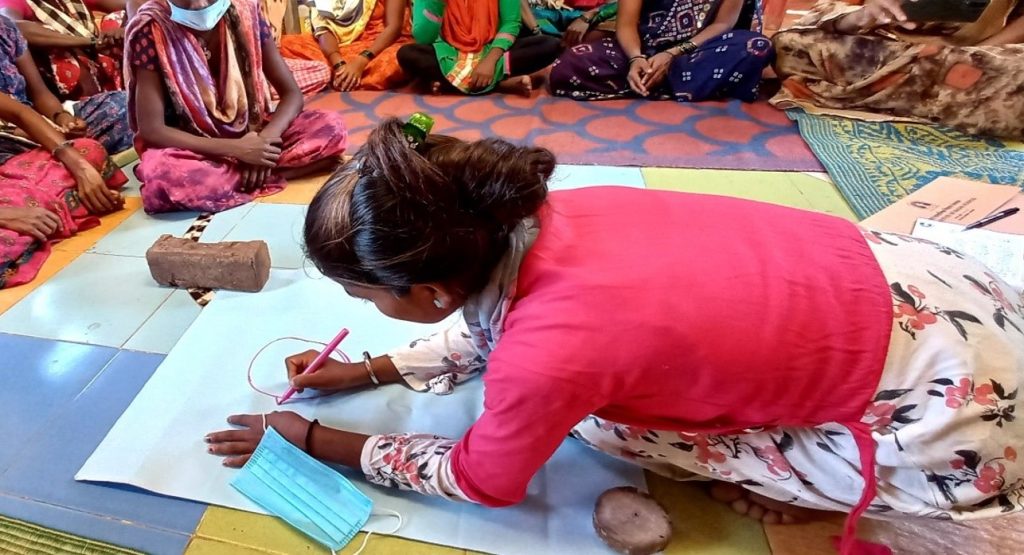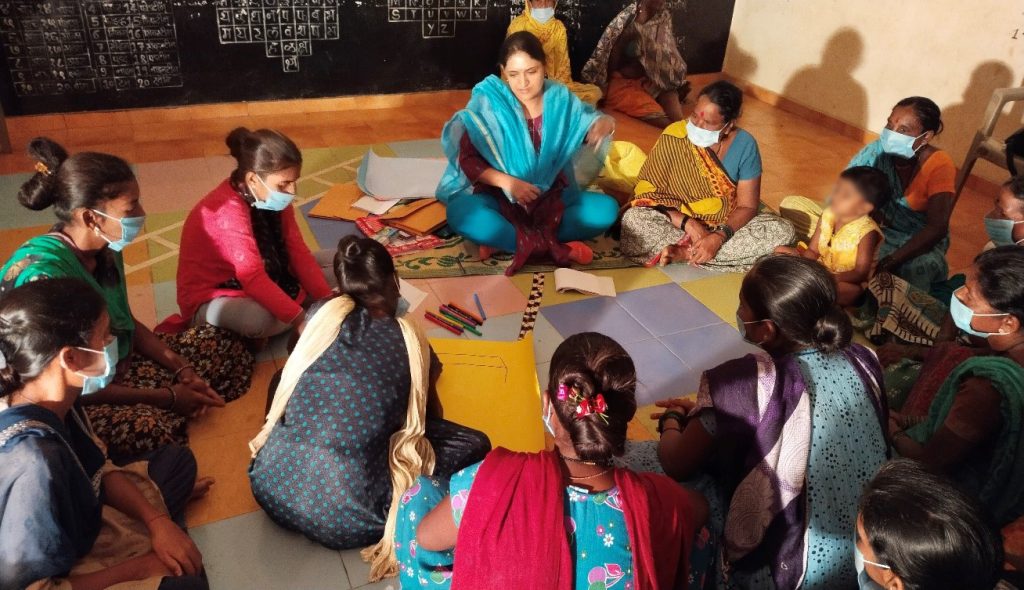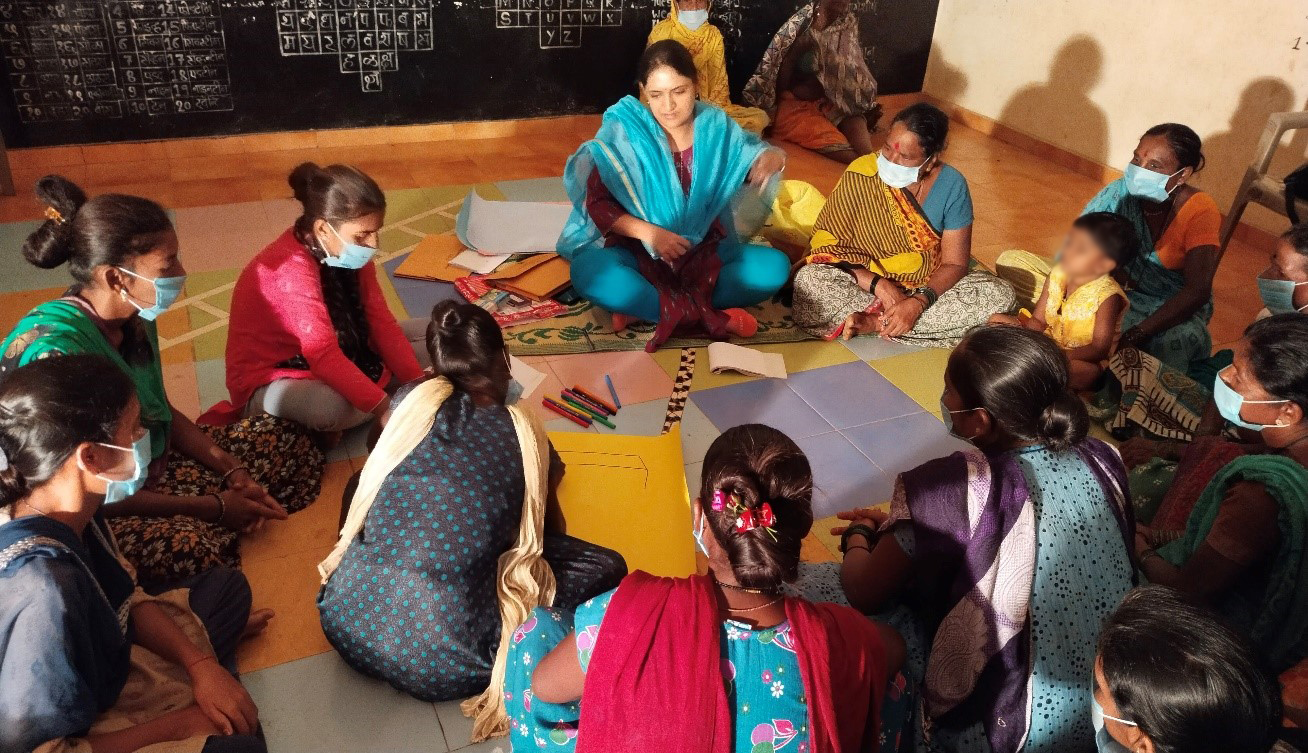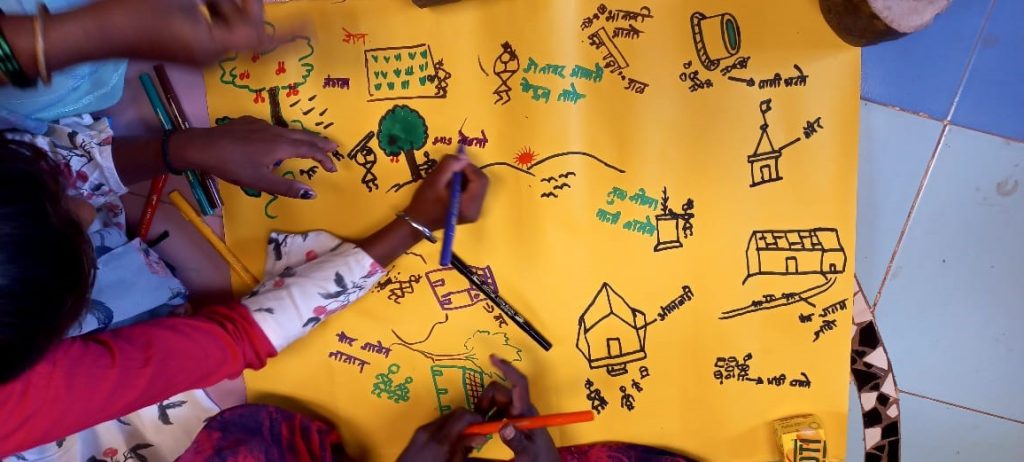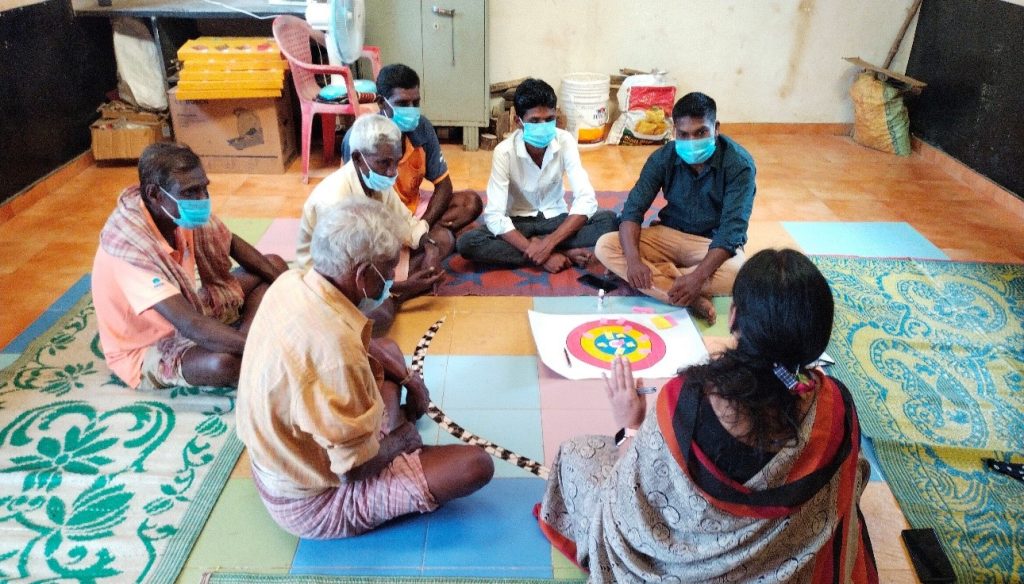Above: Khushboo Ahire (centre) carrying out community involvement activities with a group of women from Khuded, Maharahstra.
Our first full-scale building demonstrator – the Solar OASIS – is now up and running, providing the people of Khuded village with clean, solar-generated, reliable electricity. However, before construction could begin, it was important that the villagers themselves were fully on board. In this blog, PhD candidate Khushboo Ahire from the Tata Institute of Social Sciences (TISS) talks about her role in ensuring the community at Khuded were involved throughout the project.
What is your role at TISS?
I am a PhD candidate at the Centre for Population, Health, and Development in the School of Development Studies, TISS. I have also been working as a Knowledge and Innovation Research Fellow on the SUNRISE project. Being a representative of TISS, my involvement majorly revolves around conveying the voices of the community in Khuded to the other collaborators of SUNRISE in India, the UK, and elsewhere.
How have you been involved with delivering the SUNRISE building demonstrator in Khuded?
I am particularly engaged in conducting a participatory qualitative study using arts-based research methods, which focus on enhancing the capabilities of the community while also understanding their mental-physical wellbeing, assessing priority needs, as well as monitoring and evaluating the demonstrator building through the pre and post quantitative surveys.
Why is it important to involve the community?
I believe that any community we work with is the best resource to understand the regional culture, values, local issues, and possible solutions. Their indigenous knowledge and living experiences help the development practitioners in gaining insights for a successful implementation of the developmental project. The synthesis of this knowledge creates a strong foundation for designing as well as running various stages of the project activities. Often, it is also seen that the development process is simply enforced on the communities without even considering their concerns, opinions, feedback, and necessities. Hence, it is very important to involve the community at the beginning and throughout.
What methods did you use to involve and engage the Khuded residents?
We used snowball sampling for identifying the stakeholders, first through the local government Gram Panchayat and with the help of an NGO named Keshavsrushti. Pilot visits were made to interact with the local community leaders and stakeholders to understand the schedule of the community members and to work out possible dates for the data collection. Once the dates were finalized, both quantitative and qualitative research methods were administered to conduct the study. For the quantitative study, a census survey was conducted of all the households in Khuded. For the qualitative study, which was mainly carried out by using the participatory arts-based research methods, four techniques were used: body mapping, convoy model of social relationships, occupational mapping, and participatory diagramming to understand the overall demographic-social-health-economic status of the community.
Were there any challenges?
Yes, there were many challenges during the study. First of all, the unpredictable weather where the monsoon hit early and stayed for a long time impacted the schedule of carrying out the field activities. Secondly, COVID 19 was a major setback due to which we were unable to travel from Mumbai, a high-risk area, to Khuded which was a low-risk area and therefore more threat prone. Apart from that, there were certain events like the death of a community member wherein people maintain silence to pay homage to the person in his remembrance, and Indigenous festivals when we had to pause the fieldwork in order to respect the community’s culture and sentiments. As the village doesn’t have a good network facility, communicating with them over the phone to schedule meetings, group activities and other issues has been a challenge as well.
There are cases of community interventions falling into disuse once the project is completed. How do we make sure this doesn’t happen with the SUNRISE building?
What makes the SUNRISE building stand out from the other projects is that the community is involved at every stage of the project, starting from the decision-making, its inception, and collective action to its regular usage and maintenance. As of now, Avesta Solar has been given the responsibility of maintaining the building, however, the project is designed in such a way that over a period of time, selected members from the Village Energy Committee, possibly a small group of young people, would be trained to take care of the repair and maintenance work.
